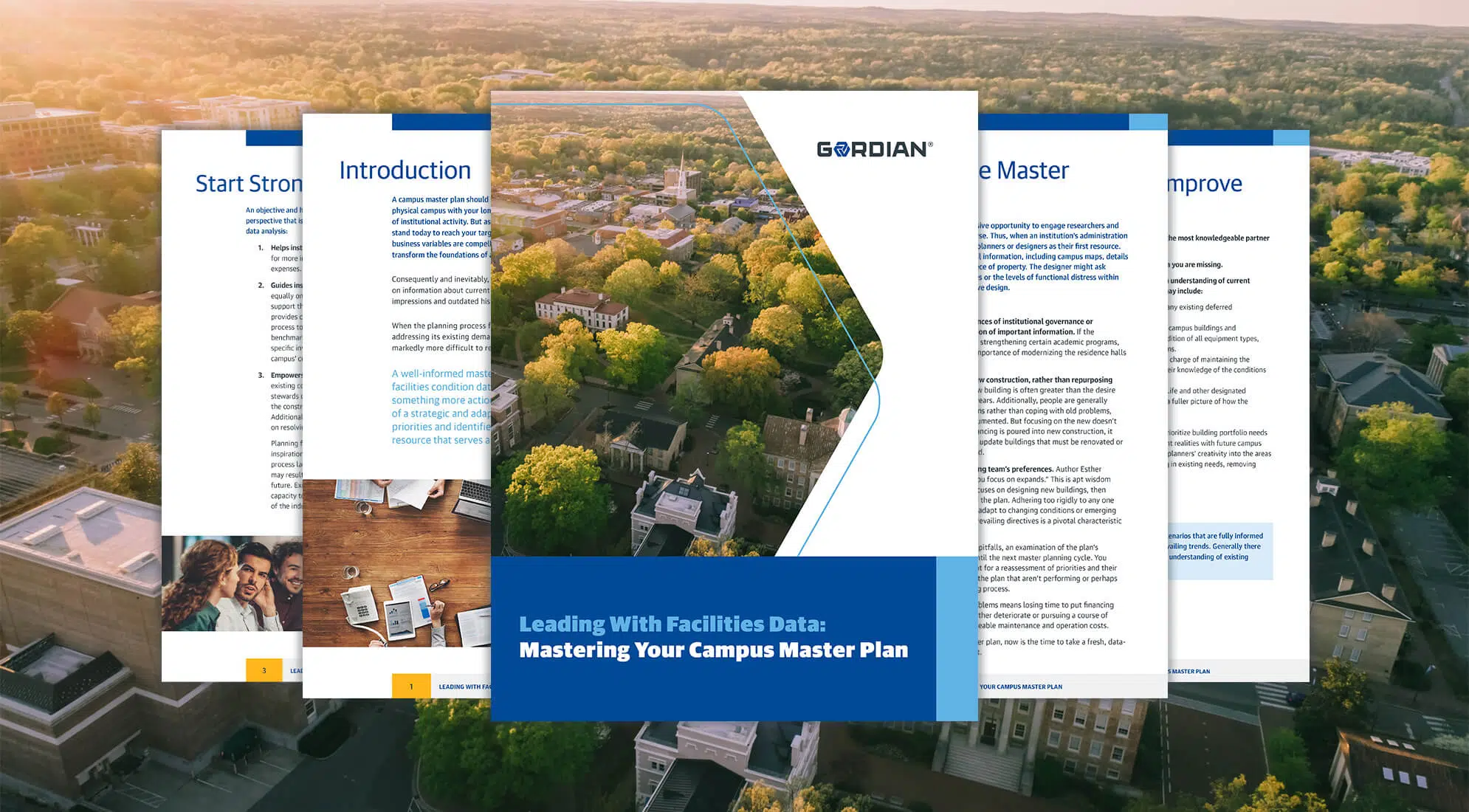Data-driven, unbiased decision making is crucial to forming a sustainable master plan. Whether you’re initiating a new master plan or updating an existing one, now is the time to put facilities data at the forefront of this major strategic effort. An objective analysis of facilities performance will be critical to your plan’s success, the bedrock of an intelligent long-term strategy. It gets the planning process off to a strong start. Here are three ways higher ed leaders benefit from leading their master planning efforts with comprehensive facilities data.
1. Improvement of Ownership Capabilities
A campus facilities portfolio is complex to manage. Older buildings add to the character and the legacy of the institution, and pose significant risks. New buildings are critical for attracting new students and remaining relevant in a competent marketplace, but require significant time and financial investments.
Facilities data helps institutional leaders act as more thoughtful facilities owners. It provides the foundation for more informed decision-making that acknowledges current and ongoing campus needs and expenses. By getting a clear picture of where your institution is today, you can channel the innovation and ingenuity typical of the planning process to create the most powerful and financially-responsible impact upon your campus.
2. Give Accurate Direction to the Master Planners
Data helps guide institutions to better manage their master planners. Master planning must focus equally on addressing issues inside existing buildings and adding new facilities to be successful. Facilities data helps support this mindset as an intelligent and productive starting place.
A facilities condition assessment provides concrete evidence that certain buildings must be accounted for in the planning process to ensure the institution continues to meet campus needs. Facilites performance benchmarking and analytical insights can provide a contextual understanding of how specific investment decisions align with broader market trends. This data will impact a campus’ competitive edge in an increasingly volatile environment.
3. Empower People Across Campus
By engaging people across campus in the review of existing conditions and priorities before beginning the master planning process, campus stewards can better ensure they are speaking to an informed audience who understands the constraints and compromises necessary to create a successful master plan. Additionally, this review can open up the conversation on complex issues so the planning team can focus on resolving problems, rather than finding them. Objective facilities data, presented in a way that’s easy for anyone to understand, provides a basis for these fruitful conversations.
Leading With Facilities Data
Planning firms across the country create master plans that are often exciting, dynamic and inspirational, and that attend to the stated needs of the institution. However, a planning process lacking facilities data that demonstrates how campus properties support the institution’s mission may result in a campus that ages poorly and is unable to carry the institution into the future. The typical master planning process is, unfortunately, susceptible to overlooking existing needs. This oversight is not willful, but the result of using underdeveloped or outdatd facilities data and the inherent vulnerability in the transfer of knowledge and insights. Existing financial plans only compound the problem, as they may not provide the capacity to support the campus over time, and risk growing out of sync with the realities of the higher education landscape.
This is why it is imperative for campus leaders to begin the master planning process with current facilities data and to consistently refer to that data for the duration of the process. A commitment to leading with data results in intelligent campus stewardship, the optimization of existing assets and balanced action toward institutional goals. These conditions lead to happy faculty, happy donors and happy students.








